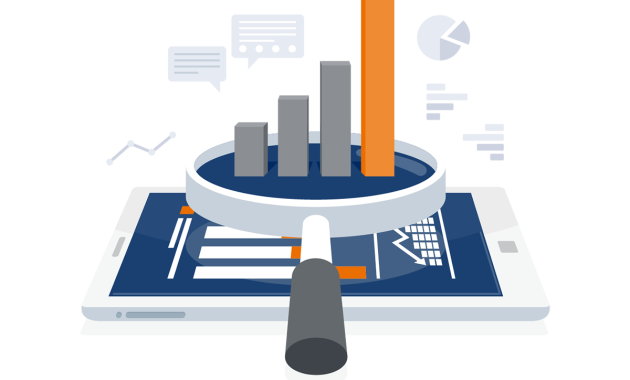
Mastering 5 Business Intelligence Tools for Data-Driven Results
In today’s data-saturated world, businesses are drowning in information. However, those that can effectively analyze and interpret this data are the ones that thrive. This is where Business Intelligence (BI) tools come into play. They transform raw data into actionable insights, empowering organizations to make informed decisions, optimize operations, and gain a competitive edge. This article delves into five powerful BI tools, providing you with the knowledge to leverage data for significant business results. Mastering these tools isn’t just about using software; it’s about cultivating a data-driven culture. The importance of business intelligence tools cannot be overstated.
The Power of Data-Driven Decision Making
The shift towards data-driven decision-making is undeniable. Gone are the days of relying solely on intuition or gut feelings. Today, businesses are armed with tools that provide concrete evidence to support their strategies. This evidence comes in the form of reports, dashboards, and visualizations. These tools allow businesses to monitor key performance indicators (KPIs), identify trends, and predict future outcomes. Implementing business intelligence tools allows for faster decision-making. This leads to improved efficiency and profitability. Data-driven decision-making also fosters a culture of accountability. Decisions are based on facts, making it easier to track progress and measure the impact of various initiatives.
Tool 1: Microsoft Power BI
Microsoft Power BI is a leading business intelligence tool, renowned for its user-friendly interface and robust capabilities. It’s a cloud-based service that allows users to connect to a wide variety of data sources. These sources include spreadsheets, databases, and cloud services. Power BI offers a drag-and-drop interface for creating interactive dashboards and reports. This makes it accessible to users with varying levels of technical expertise. The tool’s data modeling features enable users to clean, transform, and combine data from different sources. Power BI also boasts strong data visualization capabilities, with a wide range of charts, graphs, and maps. These visualizations help users to identify patterns and trends in their data. Power BI’s integration with other Microsoft products, such as Excel and Azure, further enhances its versatility. Power BI is a crucial business intelligence tool.
Key Features of Power BI:
- Interactive dashboards and reports
- Data connectivity to various sources
- Data modeling and transformation capabilities
- Rich data visualization options
- Seamless integration with Microsoft products
Tool 2: Tableau
Tableau is another industry-leading business intelligence tool known for its powerful data visualization capabilities. It’s designed to help users explore, analyze, and share data insights through interactive dashboards. Tableau stands out for its intuitive interface, which allows users to quickly create compelling visualizations. The tool’s drag-and-drop functionality simplifies the data analysis process. Tableau supports a wide range of data sources, including databases, cloud platforms, and spreadsheets. It also offers advanced analytical features, such as data blending and calculated fields. This empowers users to perform complex analyses and gain deeper insights. Tableau’s ability to handle large datasets makes it suitable for organizations of all sizes. It is an excellent choice for those prioritizing data visualization. Its focus on data storytelling makes it a valuable asset for communicating complex data findings. Tableau is a comprehensive business intelligence tool.
Key Features of Tableau:
- Intuitive drag-and-drop interface
- Advanced data visualization options
- Data blending and calculated fields
- Support for a wide range of data sources
- Scalability for large datasets
Tool 3: Qlik Sense
Qlik Sense is a business intelligence tool that utilizes an associative data model. This model allows users to explore data relationships in a more intuitive way. Unlike traditional BI tools that follow a rigid query-based approach, Qlik Sense uses associations to automatically discover connections within the data. This empowers users to uncover hidden insights and identify patterns that might be missed with other tools. Qlik Sense offers a user-friendly interface and a wide array of data visualization options. It also provides advanced features, such as data storytelling and mobile access. Qlik Sense is particularly strong in its ability to handle complex data sets. It offers a powerful engine for data analysis and discovery. This makes it a valuable tool for organizations looking to gain a deeper understanding of their data. This business intelligence tool allows for a comprehensive analysis.
Key Features of Qlik Sense:
- Associative data model for intuitive data exploration
- User-friendly interface
- Advanced data visualization options
- Data storytelling and mobile access
- Powerful data analysis engine
Tool 4: SAP Analytics Cloud
SAP Analytics Cloud is a cloud-based business intelligence tool that integrates data analysis, planning, and predictive analytics. It is designed to provide a comprehensive solution for organizations of all sizes. SAP Analytics Cloud allows users to connect to various data sources, including SAP systems and third-party applications. The tool offers powerful data visualization and reporting capabilities. It also provides advanced features, such as predictive modeling and what-if analysis. SAP Analytics Cloud’s integrated planning capabilities enable businesses to create and manage budgets, forecasts, and strategic plans. The tool’s collaborative features facilitate teamwork and knowledge sharing. SAP Analytics Cloud is a robust solution for organizations looking to streamline their data analysis and planning processes. This is a sophisticated business intelligence tool.
Key Features of SAP Analytics Cloud:
- Integrated data analysis, planning, and predictive analytics
- Connectivity to various data sources
- Powerful data visualization and reporting
- Predictive modeling and what-if analysis
- Collaborative features for teamwork
Tool 5: Sisense
Sisense is a business intelligence tool designed for complex data environments. It is known for its ability to handle large volumes of data and deliver fast performance. Sisense offers a unique in-memory data engine that allows users to analyze data in real-time. This provides a significant advantage for organizations that need to make quick decisions based on up-to-the-minute information. The tool provides a user-friendly interface and a range of data visualization options. It also offers advanced features, such as data blending and custom dashboards. Sisense is particularly well-suited for organizations with complex data requirements. It offers a scalable and high-performance solution for data analysis. Sisense is a great business intelligence tool to consider.
Key Features of Sisense:
- In-memory data engine for real-time analysis
- User-friendly interface
- Advanced data blending and custom dashboards
- Scalability for large datasets
- Fast performance
Choosing the Right Tool for Your Needs
Selecting the right business intelligence tool depends on your specific business needs and requirements. Consider factors such as data sources, data volume, user expertise, and budget. Evaluate the features and capabilities of each tool to determine which one best aligns with your goals. It’s often helpful to start with a trial or free version to test the tool. This helps you determine if it’s the right fit. Keep in mind that the best tool is the one that empowers your team to make data-driven decisions effectively. Consider your team’s technical skills and data analysis needs. Choose a tool that is user-friendly and offers the features required. Remember, the goal is to extract valuable insights from your data. The correct business intelligence tools are important.
Implementing a Data-Driven Culture
Adopting business intelligence tools is only the first step. The real value comes from cultivating a data-driven culture within your organization. This involves fostering a mindset where data is central to decision-making. It requires training employees on how to use the tools and interpret data. Encourage collaboration and knowledge sharing. Promote data literacy across all departments. Establish clear KPIs and regularly monitor progress. Celebrate successes and learn from failures. A data-driven culture empowers every employee to use data. This helps them make informed decisions. This culture transforms your organization into a more efficient and effective entity. Embrace the power of data with these business intelligence tools.
Conclusion
Mastering business intelligence tools is essential for any organization. The ability to analyze data and extract actionable insights is a key competitive advantage. The five tools discussed here – Microsoft Power BI, Tableau, Qlik Sense, SAP Analytics Cloud, and Sisense – each offer unique strengths and capabilities. By understanding these tools and implementing a data-driven culture, you can unlock the full potential of your data and achieve significant business results. Investing in the right tools and cultivating a data-driven mindset is a recipe for success. Consider these business intelligence tools for your business.
[See also: Related Article Titles]

